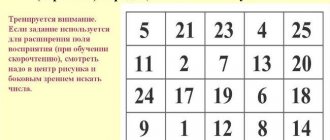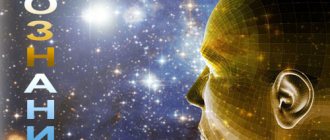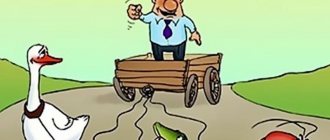Human thinking is the process of understanding the world, obtaining information, and reflecting reality. All living beings can sense the world around them using their senses. But only human thinking is capable of receiving information that is inaccessible to ordinary perception.
The result of thinking is thought, that is, meaning, understanding, conclusion. Great philosophers considered thinking to be the main human essence. “I think, therefore I exist” (Descartes).
Thinking and its functions
Thinking is:
- mental activity to understand the meaning of things and phenomena;
- the mental process of cognition, which reflects the connection of objects and the relationships between them;
- a brain function that develops in the process of theoretical learning, practical activity, and gaining life experience.
Like any ability, brain function requires constant training and exercise. It has long been noted that breaks in work reduce professionalism, and it takes time to restore skills.
Thinking originates as sensation, perception, idea, and then goes beyond them. A person perceives things that are not perceived by the senses.
Thanks to thinking, the characteristics of objects are understood, a transition is made from the quantity of information to its quality, associative connections are built, the description is compared with real properties, and a conclusion is drawn about the object.
An important function of thinking is the ability to distinguish between objects and see their similarities and differences.
What are the forms of thinking based on logic: examples
Following the logical structure of mental activity, the following processes are put forward:
- comparison;
- analysis;
- abstraction;
- synthesis;
- generalization.
The comparative operation is based on determining the similarities and differences between phenomena. The result is a classification, which serves as the primary stage of theoretical understanding.
Face-to-face consultation
What are the features and advantages of face-to-face consultation?
Find out more
Skype consultation
What are the features and benefits of Skype consultations?
Find out more
Analysis is the procedure of dividing one significant object into various parts or characteristics, followed by comparison.
Synthesis - with its help you can mentally create a complex object from analytical components.
Abstraction – highlights significant properties and connections of phenomena and abstracts from insignificant ones. This is a process of detailed study, as a result of the research, concepts are formed.
Generalization is the ordering of objects according to common and essential characteristics.
Mental operations occur on the basis of logical ones, but this does not always work as a mechanism in which only reason and logic function. Very often emotions interfere with this process and completely change it. Since the emotional component has the ability to change and stimulate mental activity. Feelings tend to impart tension, goal-seeking, and ambition. Without emotions, productivity is reduced to zero, just as without logic, knowledge and skills.
Types of thinking
The following types of thinking are distinguished:
- Figurative. Created at the beginning of human growth. Concrete images are used to develop this thinking. The problem is formulated specifically, and the solution is made by performing certain actions.
- Conceptual. It is formed as theoretical knowledge and concepts, abstract knowledge that combines logical conclusions. Problem solving is carried out theoretically using theories and abstractions.
- Iconic. Based on verbal signs: signals, symbols, signs. Signs carry information about processes, phenomena, and objects. According to the information received, models of human and social behavior are built. Sign thinking is inextricably linked with modeling.
Types of thinking
Thinking in psychology is divided into theoretical and practical. The first solves problems through theoretical concepts, and the second is used for practical inferences.
Types of thinking according to form:
- Visual and effective, when a problem is solved by physically changing conditions with specific actions.
- Visual-figurative, when the problem is solved in the imagination by imagining and changing all the components.
- Abstract-logical, when the problem is solved using logic and concepts through verbal reproduction and discussion.
Types of thinking according to the method of solution:
- Theoretical. Thinking is theoretical in nature. The results of such work are theoretical knowledge. For example, the development of laws, regulations, principles.
- Practical. Thinking transforms theoretical knowledge into practical knowledge. Theory is translated into practical action and produces real results.
Types of thinking based on novelty:
- Reproductive. Solving a problem in a known way, reproducing old methods and results.
- Productive. Creating new ways of processing information, obtaining previously unknown results.
- Intuitive. It happens automatically on a subconscious level. This is possible only if you have theoretical knowledge, proven skills and extensive life experience.
- Discursive. High performance thinking. A consistent, logical understanding of the problem with several possible solutions is carried out.
- Empirical. Unproductive thinking. Based on my own practical and life experience. Does not take advantage of theoretical and practical types of thinking. Does not reveal the essence and connection of objects and phenomena.
Types of thinking depending on characteristics:
- Technical. Aimed at solving professional technical problems.
- Constructive. It is distinguished by the formulation of a specific task, focus on solving it, abstraction from extraneous thoughts and emotions, a positive attitude, and division of the process into stages.
- Synthetic. Characterized by the combination of various factors to create a new solution.
- Secular. Represents legal, scientific, legalized thinking in accordance with the current legislation of the state.
- Religious. Based on religious faith depending on the specific religion. Has specific restrictions in judgment in accordance with the requirements of religion.
- Scientific. It consists of studying and explaining objects and phenomena of the surrounding world on the basis of scientific laws and methods.
- Creative. Expressed in the creation of new, unusual ways of knowing, the creation of creative ideas.
- Ethnic. It is formed in every nation in connection with the living conditions in which a person lives: climate, occupation, economic characteristics, social environment.
Logic | Page 1 | Online library
D. A. Shadrin Logic
1. Introduction to logic course
In its development, humanity has come a long way - from distant times, when the first representatives of our kind had to huddle in caves, to the cities in which we and our contemporaries live. Such a time gap did not affect the essence of man, his natural desire to understand the world around him. However, knowledge of anything is impossible without the ability to separate true from false and truth from lies. It just so happens that truth has always been an ambiguous phenomenon. She generously gifted some, and brought misfortune and sorrow to others. And here everything depends on the person himself, his upbringing, will and fortitude. But everyone must understand that only truth contributes to human development, both spiritually and scientifically.
Science has not always followed the path of establishing truth, and this path has shown its inconsistency. There have been attempts to characterize a person’s personality by the shape of his head, and many other equally absurd directions. But if such mistakes were not made in the development of science, it would be impossible to determine the value of correct approaches. Achieving the desired result is also hampered by the fact that the path to true knowledge has always been thorny. Many scientists, fighting for their idea and the discoveries that they were able to make (sometimes centuries ahead of schedule), sacrificed their lives. Suffice it to recall the Italian scientist Giordano Bruno, who burned at the stake because he did not want to renounce his theory of the infinity of the Universe and the countlessness of its worlds. Or modern nuclear physicists, or microbiologists who were exposed to radiation and experimented on themselves for the benefit of others. However, despite this, not all useful discoveries are now beneficial to people. Some projects are closed due to lack of funding, others serve the opposite purpose. For example, the atomic reaction from the very moment of its discovery had a dual character. On the one hand, it effectively serves people, providing huge quantities of energy, and therefore heat and light. On the other side of the scale lie the lives of those who died after being exposed to deadly radiation. Therefore, I would like to believe that in the future such knowledge will be used only for the benefit of man.
Learning is light and ignorance is darkness. Knowledge is power. These are sayings known to everyone since childhood. And indeed, the more significant a person’s knowledge, the greater his power. However, it is almost impossible to obtain true knowledge without the help of special techniques. There is an opinion that you can think correctly without using the laws of logic and without even knowing about them, on the basis of everyday experience and common sense. However, it is not. For example, you can solve a mathematical problem by reaching it, as they say, “with your own mind,” but another such problem will no longer be solved, because it is based on rules unknown to the solver. Or he can easily make a mistake that will result in a completely wrong answer. This is also the case with thinking. Only the study of logic and constant training of logical abilities allow a person to think correctly, clearly and without errors. And a mistake, even the smallest one, can cost an individual and even humanity a lot. For example, fascism, as a political phenomenon that led to the most devastating war in the modern world, was based on an ideology that was obviously incorrect. However, there was no person who could refute the ideas of fascism in time and expose them. This is just one example that makes it clear how necessary logic is in the life of a person, not only involved in science or politics, but also an ordinary citizen, in order not to get into trouble, not to be deceived, and not to be subject to the undesirable consequences of a carelessly spoken word.
2. Logic of the Ancient World
Ancient India
The logic of the Ancient World owes its appearance to the philosophers of China, India and Greece. It is known that in the early stages of development, logical knowledge was ontological in nature, that is, the laws of thinking were equated with the laws of being. Much attention during this period was paid to inference, and the latter was practically identified with evidence.
Rhetoric gave impetus to the development of logic. Oratory used the rudiments of logical knowledge to achieve the main goal of the speaker - to persuade the listeners, and not to establish the truth, as is the case in later periods. The logical element here is of a subordinate nature, and is, as it were, an integral part of oratory.
Philosophy as a body of scientific knowledge originated and developed simultaneously in ancient states that had different views on the world around them, with different approaches to its study and with a different body of accumulated knowledge. Therefore, the philosophical knowledge of the Ancient World can be divided into two depending on the state in which it originated. One of these movements arose in Ancient Greece, the other was fundamentally an Eastern approach to science, characteristic of philosophers in India and China. Modified under the influence of time, the Greek direction of philosophy is now represented in Russia, Western Europe and America, where it came through the Roman Empire and Byzantium along with the belief in one God. The Indochinese direction of philosophy was adopted in Mongolia, Japan, Korea, Indonesia and other countries.
Philosophical ideas in Ancient India were developed by representatives of 16 schools, the main of which were the schools of Charvaka, Lokayata (founded by Brihas-pati and his student Charvaka), Vaisheshika (founder Canada), Nyaya (Gautama) and Jainism (Vardhamana Mahavira). These schools belonged to the materialist direction of philosophy, that is, their representatives believed that the material world exists objectively, and matter is primary in relation to consciousness and exists forever. They were opposed by representatives of philosophical schools who preached an idealistic approach to the study of the world. They considered the spiritual principle, consciousness and thinking to be primary, and the material world was relegated to the background. Yoga and Buddhism, as well as Mimamsa and Vedanta, adhered to such ideas.
The development of logic in Ancient India dates back about two millennia, and partly for this reason it has not yet been fully studied. This can also be seen in works devoted to the logic and philosophy of Ancient India. Despite the large number of such publications, they do not contain a unified approach to the issue under consideration. However, this does not prevent the recognition of the fact that ancient Indian logic has an original character and features that distinguish it from the logic of Ancient Greece. Thus, the syllogism here is divided not into ten, but into five members (thesis, basis, example, application, conclusion); deduction and induction are considered inseparable; mental and verbal speech are distinguished; the basis of perception is considered to be acquired experience, and judgment is considered to be part of the inference.
3. Ancient China
Ancient China. In Ancient China, much attention was paid to ethical, philosophical and political issues, which were enshrined in a large number of treatises. This is how the science of names (theory of names) developed, the laws of thinking and the specifics of reasoning and statements were revealed.
The origin of the logic of Ancient China , according to modern historians, occurred during the Chuntsu and Zhanguo periods, which are known due to the emergence of the new concept of “philosophical discussion”. Also, this period (722–221 BC) is characterized by the emergence and development of a process called the “rivalry of a hundred schools.” Among the well-known representatives of philosophical teachings who also develop the ideas of logic are the names of Confucius and Mozi.
The philosophical schools that existed in China at that time included Mingjia (the school of names), Fajia (the school of laws), Rujia (developing Confucian ideas) and Mojia (the Mohist school). As a result of the activities of these schools, a more or less coherent system of logic gradually began to emerge. However, since logical knowledge was fragmented and consolidated not in one source, but in many treatises, it required systematization. A school was needed that would combine all knowledge about logic in a single act, which would greatly simplify the use of logical achievements. The mojia school became such a school. The later Mohists, using the philosophy of Mozi, created the first treatise on logic in China called Mobian.
Forms of thinking in psychology
Thinking is a mental process that results in the formation of conclusions.
Thinking processes include:
- Concept. This is a representation reflected by thinking, a unity of important properties, connections, objects and phenomena, generalized by classes and characteristics. Created on the basis of life experience and acquired knowledge.
- Judgment. Represents the implementation of a logical form of thinking based on concepts.
- Conclusion. It is a conclusion that is logically formed from the combined judgments.
- Induction. This is a method of inference that leads to conclusions by moving from particular judgments to general ones.
- Deduction. This is a method of inference that leads to conclusions by moving from general judgments to specific ones.
Thinking processes.
There are several basic mental processes (mental operations) with the help of which mental activity is carried out.
Analysis is the mental division of an object or phenomenon into its constituent parts, identifying individual features in it. Analysis can be practical or mental.
Synthesis is the mental combination of individual elements, parts and characteristics into a single whole. But synthesis is not a mechanical connection of parts.
Analysis and synthesis are inextricably linked and provide comprehensive knowledge of reality. Analysis provides knowledge of individual elements, and synthesis, based on the results of analysis, provides knowledge of the object as a whole.
Comparison is a comparison of objects and phenomena in order to find similarities or differences between them. Thanks to this thinking process, we understand most objects, because... we know an object only by equating it with something or distinguishing it from something.
As a result of comparison, we identify something common in the compared objects. That. Thus, a generalization is built on the basis of comparison.
Generalization is the mental grouping of objects into groups according to those common characteristics that are highlighted during the comparison process. Through this process, conclusions, rules and classifications are made (apples, pears, plums are fruits).
Abstraction consists in the fact that, by isolating any properties of the object being studied, a person is distracted from the rest. By abstraction, concepts are created (length, breadth, quantity, equality, value, etc.).
Concretization involves the return of thought from the general and abstract to the concrete in order to reveal the content (give an example of a rule).
Thinking as a problem solving process.
The need for thinking arises primarily when a new problem appears in front of a person in the course of life. Those. thinking is necessary in situations in which a new goal arises, and the old methods of activity are no longer sufficient to achieve it. Such situations are called problematic . It is in a problem situation that the thinking process begins. In the course of activity, a person encounters something unknown, thinking is immediately included in the activity, and the problematic situation turns into a task conscious of the person.
A task is the goal of an activity, given under certain conditions and requiring the use of means adequate to these conditions to achieve it. Any task includes: goal, condition (known), sought (unknown). Depending on the nature of the final goal, a distinction is made between practical tasks (aimed at transforming material objects) and theoretical ones (aimed at understanding reality, for example, studying).
The principle of solving the problem : the unknown is always connected with something known, i.e. the unknown, interacting with the known, reveals some of its qualities.
Thinking and problem solving are closely related to each other. But this connection is not clear-cut. Problem solving is carried out only with the help of thinking. But thinking is manifested not only in solving problems, but also, for example, in acquiring knowledge, understanding text, posing a problem, i.e. for cognition (mastery of experience).
Operations of thinking
Thinking operations are the only operations that bring results in human mental activity:
- Analysis is the division of a problem into its constituent elements.
- Synthesis is the combination of task elements that were separated during the analysis process; identifying connections between elements.
- Comparison – comparison of task elements to identify similarities and differences.
- Classification is the arrangement of task elements according to group characteristics.
- Generalization is a combination of elements of a problem according to homogeneous properties.
- Concretization is the separation of the particular from the general.
- Abstraction is the isolation of one element and distraction from others.
Properties of the thought process
- Direction is the main feature of thoughts. This indicates that every statement and reflection has its own completeness and purpose.
- Direction both to the future and to the past - a person can think about what happened to him yesterday, or, conversely, analyze what to do in a given situation.
- Concept formation using mental activity. She tries to characterize, organize, determine the similarities and differences of things.
- Logic is an essential element of reasoning.
Diagnostics of thinking
Diagnostics reveals disorders of thinking in a person and determines his character. Diagnostic data is necessary for prescribing preventive measures or treatment.
Diagnostics is carried out using the following methods:
- observation;
- conversation;
- survey;
- laboratory experiment;
- testing;
- self-observation;
- modeling the thinking process;
- abstract or mathematical modeling;
- psychophysiological indicators: interest, complexity, degree.
Thought disorders by shape
In psychology, the following thinking disorders are distinguished depending on specific disorders.
Tempo violations:
- Accelerated thinking. It is characterized by accelerated speech, that is, words are pronounced quickly and slurred. Thinking is hasty, superficial, and conclusions, as a rule, do not correspond to reality.
- Slow thinking. It is expressed in inhibition of behavior, slow speech with delays in words. Conclusions are often incorrect and difficult to come by.
Impaired thinking:
- Broken thinking. It is characterized by a lack of meaning in speech, although the words are arranged according to the rules of grammar.
- Incoherent thinking. Manifests itself in the absence of meaning in speech. Sentences look like a set of separate, unrelated words and are constructed in violation of the rules of grammar.
Violation of purposeful thinking:
- Reasoning. It looks like vague, too wise, lengthy discussions about ordinary things and on ordinary topics.
- Autistic thinking. Immersion in the world of your own illusions and fantasies, incomprehensible to others.
- Symbolic thinking. Developing your own language, new words that are incomprehensible to others. The use of symbolic words that have a special meaning only for the speaker.
- Pathological thoroughness. Immersion in details, inability to highlight the main thing in a speech, focusing on secondary, unnecessary details.
- Perseverance of thinking. Expressed in persistent repetition of the same phrases, difficult transition to other words.
Thinking disorders by content
- Crazy ideas. They represent erroneous conclusions from the usual set of facts.
- Delusional syndromes. Based on an incorrect assessment of personal life situations. They entail erroneous conclusions and conclusions about processes in life.
- Super valuable ideas. They arise on the basis of real facts, but are unjustifiably overestimated. They are given too much value and importance.
- Obsessions. They have an imaginary, persistent, obsessive nature in the form of unpleasant, sometimes painful thoughts, ideas, and experiences.









